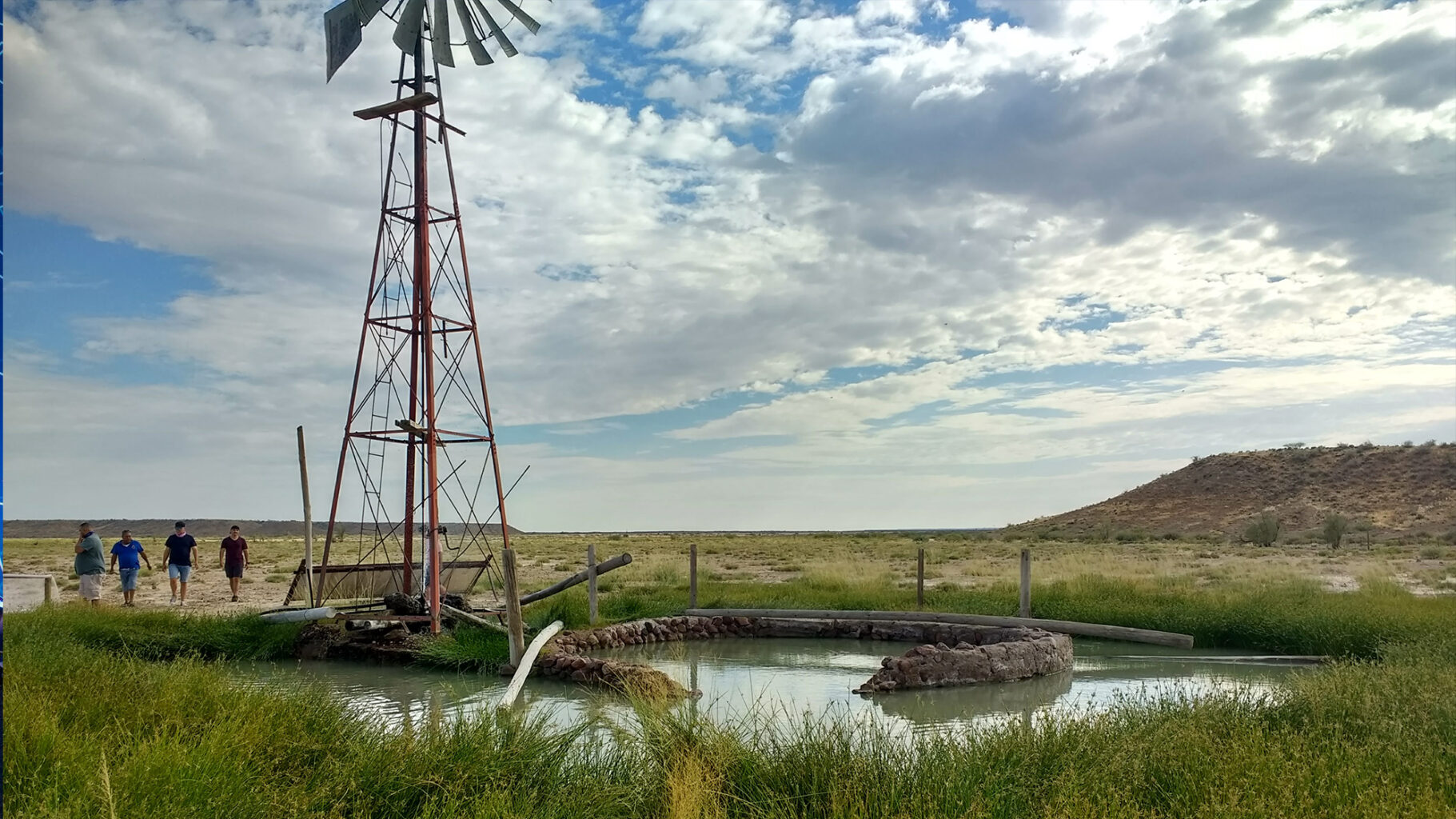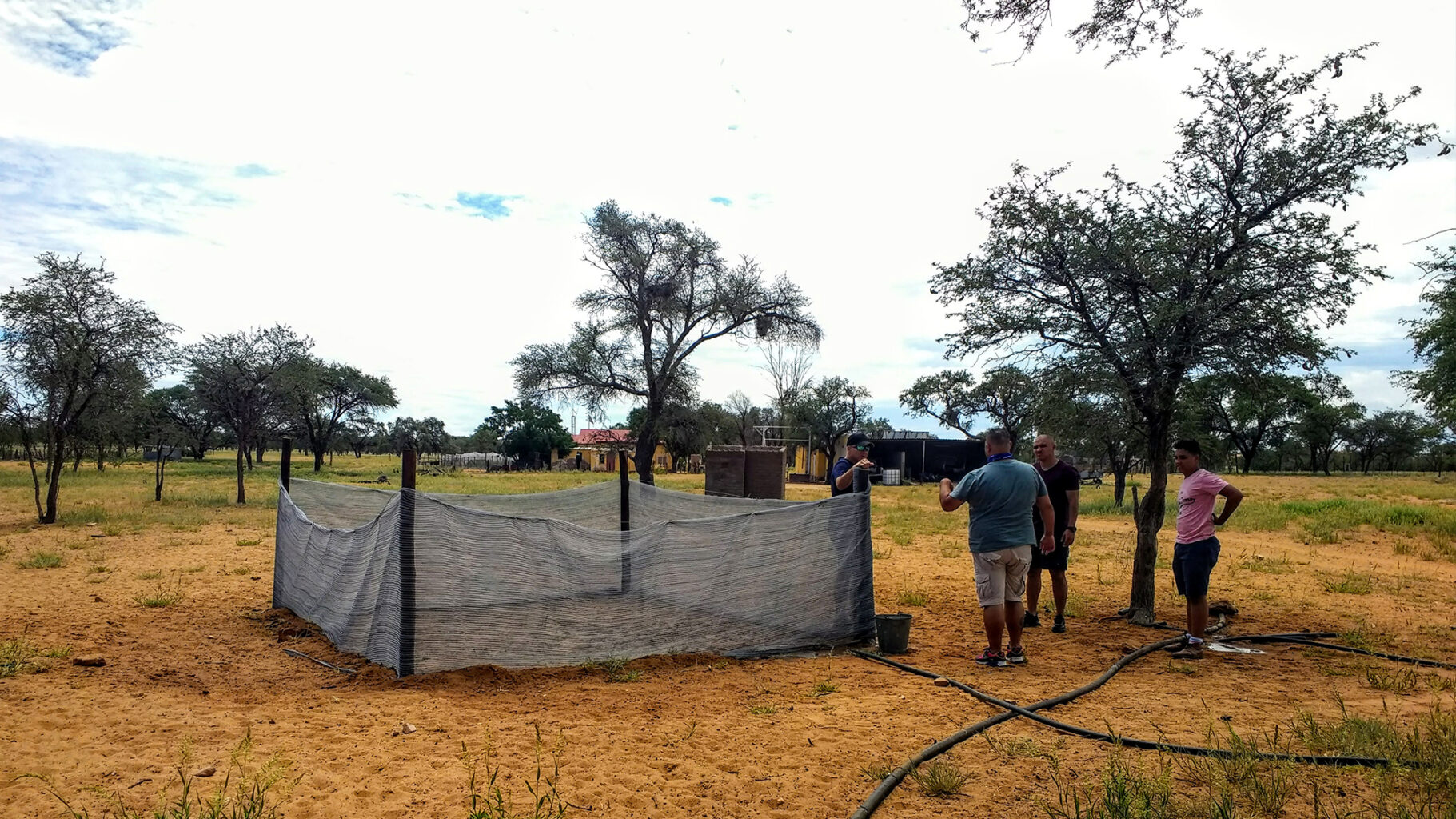By Chris Eccles, Seawater Solutions Environmental Coordinator

We have been focusing a lot on our coastal project in Namibia, turning the desert green with our Integrated Saline Agriculture Systems. But one of our favourite parts of the job is travelling to new places and discovering more about the land, how people live, and some of the biggest challenges they face.
On a recent trip inland, we discovered that many of the issues facing coastal communities are also reflected hundreds of miles away on rural farm sites.

Thanks to the ever present effects of climate change, the vast central flat lands near Mariental have suffered from a major drought, with little to no rain in 7 years. This had created a huge pressure on freshwater resources and the result in a cascade of negative effects:
- Lack of fresh water means low crop yields.
- No crops cause soil to lose nutrients and erode as well as lack of feed for livestock; causing their condition deteriorate leading to high mortality and disease.
- With dwindling resources farmers are forced to buy imported feed or sell their animals for a low price or give up livestock farming altogether.

Although there may not be much water coming from above, there is water below. Large groundwater aquifers have been a lifeline during the drought, providing water to set up some level of irrigation system. The only catch is that many of these aquifers provide water that is too saline to grow conventional crops or for humans to drink. So we are drawing upon lessons from our project in Malawi, where we grew salt tolerant crops in inland regions using saline groundwater.
We are starting small, setting up mini pilot trials on a number of different farms to test the crop, soil, and water conditions, closely monitored by farmers on the ground. By establishing climate resilient crops in these areas, we can ensure harvest even during drought conditions to benefit local farmers and communities.